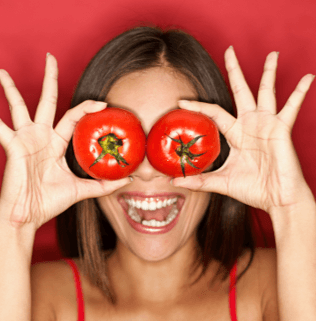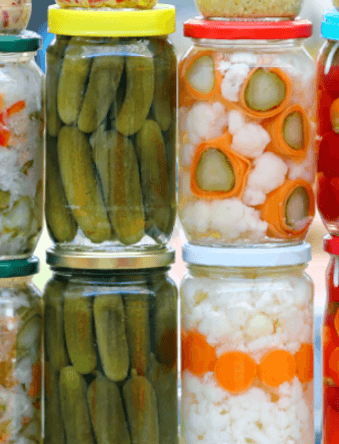No dietary suggestion is as tedious (or important) as advice to eat more vegetables and fruit.
You were told that by your parents. And you’ve cajoled your kids to do the same.
But here’s the catch…although everyone knows that eating more vegetables and fruit is a good idea—hardly anyone does it. Why?
The Promise of Produce
Veggies and fruit have some pretty powerful health stats, including:
- each daily serving of dark green leafy vegetables cuts the risk of heart disease by 23%
- 4 servings of blueberries per week reduces the risk of heart disease by 34%.
Bet you would have heard more about these benefits if they came from a drug instead of a leaf or berry. You don’t see too many ads prompting you to “ask your doctor if blueberries are right for you!”
The Reality
A mere 26% of U.S. adults eat three or more servings of vegetables per day, and only 33% have fruit two or more times a day, according to the Centers for Disease Control.
And despite all the knowledge, we’re actually moving in the wrong direction. As a nation, fruit consumption is on the decline and vegetable consumption has been flatlined.
Digging Deeper
According to a State of the Plate report:
- restaurant meals accounts for only 10% of all vegetable consumption and 2% of all fruit (no surprise there!)
- dinners at home include a vegetable (in any form) just 23% of the time
- breakfast is the meal most driven by health concerns
- the demographic with the highest fruit and vegetable intake are those over 55, but even this group has recently seen a surprising decline in consumption (due to an increase in single-item dinners eaten in that age group, such as a pizza or sandwiches)
From Contemplation to Action
These are some proven “nudges” to help you—and your family—get more fruit and vegetables in your world:
- Cook with your kids: in one study, kids who helped their parent cut vegetables before dinner ate 76% more salad than those who weren’t involved in meal prep.
- Prepare sliced fruit and vegetables, and have them readily available: pre-slicing fruit increased demand by 71% in one middle school study. Also works for adults!
- Be a role model: kids take your lead. Show them that sliced fruit can be dessert.
- Roasting vegetables makes them sweet, crunchy, and generally more appealing than boiled or steamed versions (no evidence—just my personal observation!).
- Eat out less: it’s clear that the deck is stacked against healthier eating when you’re dining out.
More vegetables and fruit. The benefits are clear. Your challenge is to make it happen!
References:
CDC Report on Fruit and Vegetable Consumption
Increased Demand for Pre-Sliced Fruit
Interested in eating better for your own health?
Learn the essentials of good nutrition in our interactive, user-friendly nutrition learning program for the public.
Clinicians: Do you feel confident responding to patient questions about nutrition?
Take our award-winning condensed interactive nutrition CME—and learn what every clinician should know about nutrition.



